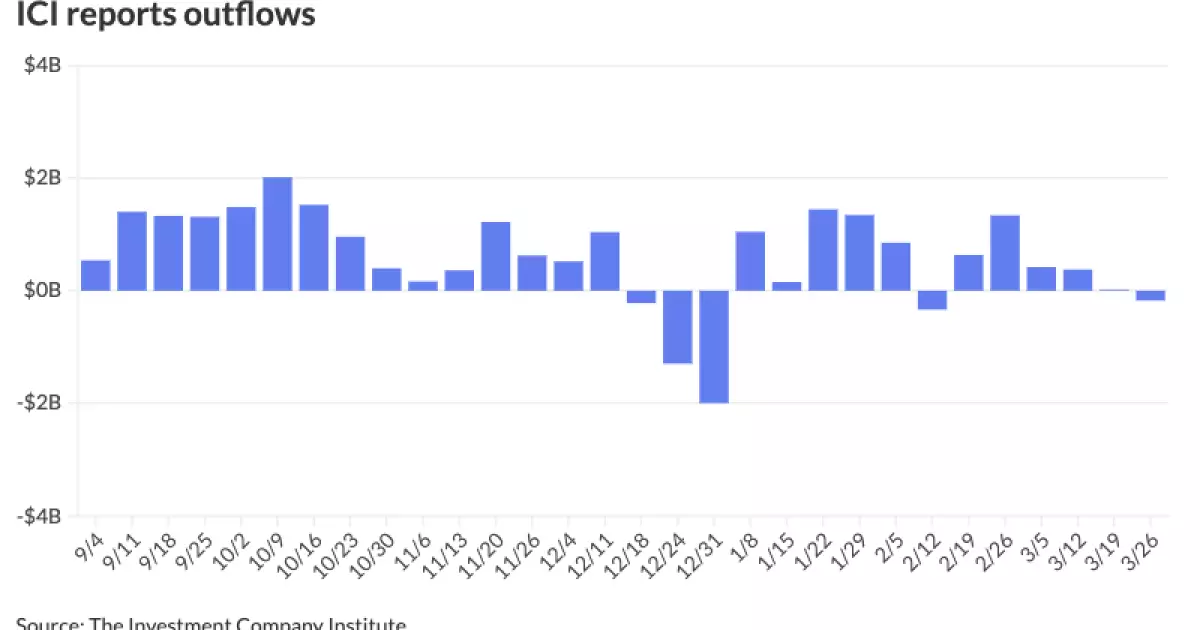In recent weeks, the U.S. financial landscape has been fraught with uncertainty, primarily spurred by unprecedented political maneuvers. President Donald Trump’s recent speech announcing sweeping new tariffs sent shockwaves through the markets. On that particular day, municipal yields remained relatively stable, while U.S. Treasuries and equities exhibited volatility—and it was all seemingly rooted in one speech.
As Trump detailed tariffs that ranged from reciprocal measures to previously delayed tariffs on trade partners like Canada and Mexico, a palpable tension thickened in the air. Investors seemed to glimpse the chaos these policies could unleash, driven more by fear than by fundamental economic indicators. This notion that anxiety is the true lifeblood of financial markets raises several critical questions. Are we witnessing a momentary panic, or has the fabric of our economy started to fray with deeper issues lurking beneath the surface?
The Role of Uncertainty in Market Dynamics
The uncertainty surrounding tariffs has been underscored by analysts from J.P. Morgan, who predict heightened volatility as businesses grapple with the implications of impending trade actions. They articulate a crucial distinction: “fear, not fundamentals,” is currently propelling market activity. This insight resonates deeply within the context of rising geopolitical tensions and domestic policy volatility. It appears that regardless of strong economic fundamentals, companies and investors remain on edge, creating an environment ripe for severe market reactions.
James Pruskowski, chief investment officer at 16Rock Asset Management, points out that crumbling confidence is not merely a byproduct of tariffs but a broader symptom of policy upheaval, extending to tax reforms and immigration policies. This has exacerbated concerns regarding an impending recession while lending a layer of instability to an already fragile economic climate. As corporations brace for impact, it’s hard to ignore the ripple effects that these policy decisions could have on labor markets and economic growth.
Muni Bonds: The Silent Suffering
Turning our eyes toward municipal bonds, it is alarming to note that although yields remain steady, the underlying fundamentals indicate emerging stress—particularly in healthcare and higher education sectors. With fiscal and policy risks growing, this segment of the market seems precariously balanced on the razor’s edge of disruption.
Pruskowski warns of tightening liquidity and the impact of unchecked uncertainty on investor confidence. Discussions about capping the muni bond tax exemption have resurfaced, stirring memories of past political battles fought by public finance advocates. Even though these attempts have historically fallen flat, they highlight a critical vulnerability. Muni bonds play a pivotal role in public finance, and any disruption could trigger a larger crisis, making investors rightfully wary.
Broad Market Reactions: Evidence of a Shifting Landscape
As if to punctuate the prevailing fear, the Financial Market Intelligence reports outflows of $175 million in municipal bonds and $312 million from exchange-traded funds. The market seems to be shaking out weaker hands, indicating that many investors are choosing self-preservation over the risks that accompany potential policy shifts. With projections for rising inflation looming, coupled with corporate profit warnings from big players like FedEx, it feels as though we are teetering on the brink of disaster.
Notably, treasuries witnessed a decline following Trump’s speech, reversing any early gains. The yields reflect a growing concern that policymakers at the Federal Reserve may focus disproportionately on inflation without acknowledging the legitimate risks of stagflation. For those invested in these markets, the seeming disconnect between policy focus and economic reality is a source of grave concern.
The Dichotomy of Economic Data
It’s fascinating to see how economic data continues to display resilience even as sentiment sours. While the fundamentals of the global economy appear robust, market participants are increasingly driven by emotional responses rather than rational analysis. The contradiction between improving economic indicators and deteriorating investor confidence suggests we may be facing a fundamental break between what is happening and what investors believe is happening.
If the underlying confidence crumbles under the weight of political uncertainty, the effects could ripple through to Main Street. Corporate leaders, beset by concerns over tariffs and profit margins, may be compelled to make difficult decisions regarding hiring and investment—a troubling scenario that could hinder economic recovery in the longer term.
The mix of political indecision, market turbulence, and increasingly vocal sentiment suggests that U.S. financial markets are on a precarious ledge. As investors brace for the unknown, it becomes increasingly clear that a calm surface must not distract us from the turbulent waters lurking just beneath. Whether it’s the continuing discourse on tariffs or the challenging dynamics faced by municipal bonds, the outlook is nothing short of alarming.


Leave a Reply